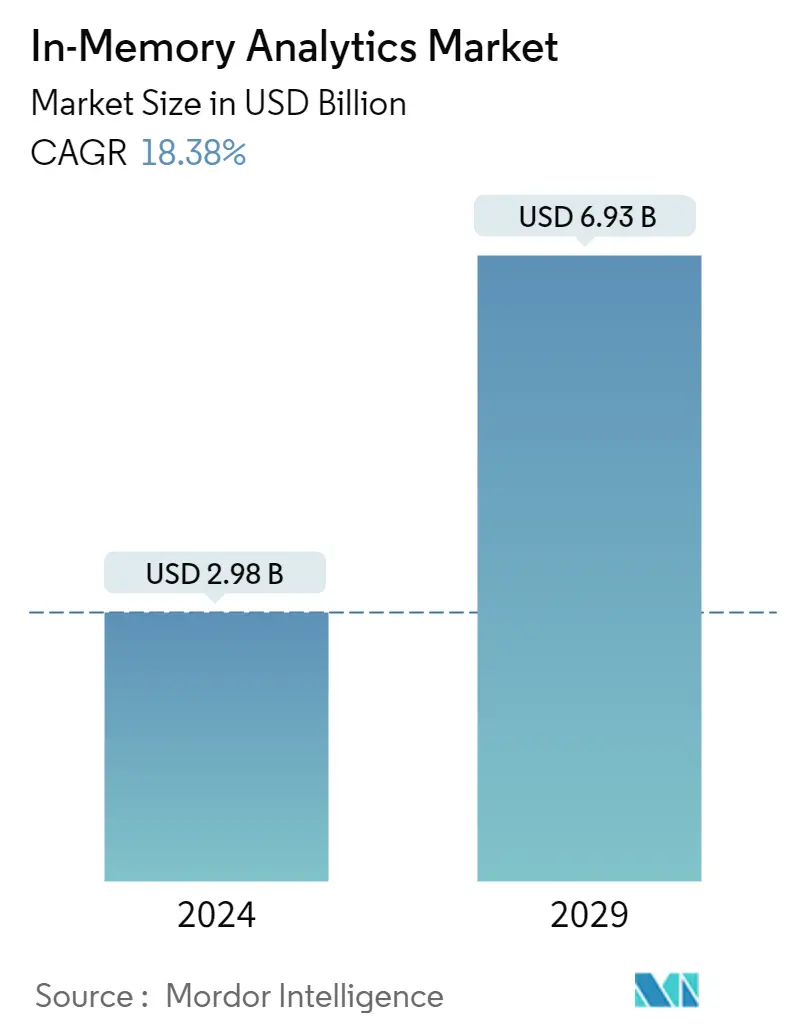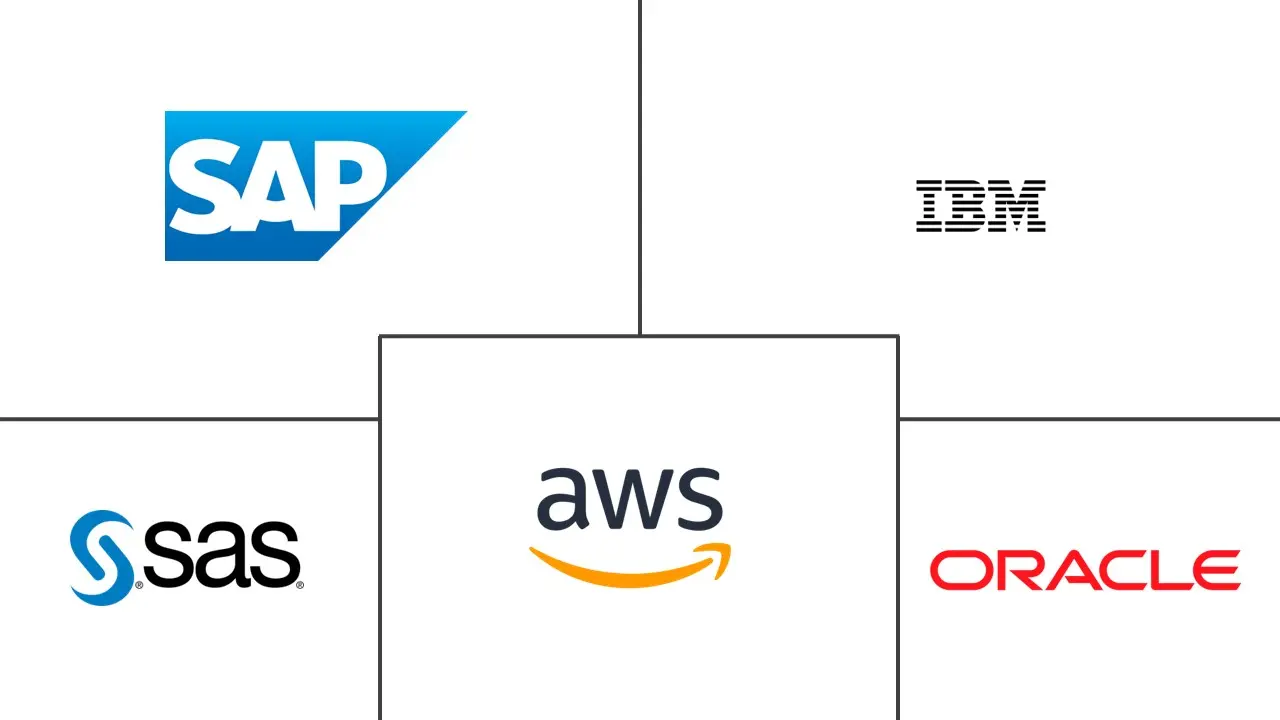Market Size of In-Memory Analytics Industry

| Study Period | 2019 - 2029 |
| Market Size (2024) | USD 2.98 Billion |
| Market Size (2029) | USD 6.93 Billion |
| CAGR (2024 - 2029) | 18.38 % |
| Fastest Growing Market | Asia Pacific |
| Largest Market | North America |
Major Players
*Disclaimer: Major Players sorted in no particular order |
Need a report that reflects how COVID-19 has impacted this market and its growth?
In-Memory Analytics Market Analysis
The In-Memory Analytics Market size is estimated at USD 2.98 billion in 2024, and is expected to reach USD 6.93 billion by 2029, growing at a CAGR of 18.38% during the forecast period (2024-2029).
New persistent memory technologies will help reduce the costs and complexity of adopting BMI-enabled architectures (in-memory computing), which is becoming a trend nowadays. Persistent memory represents a new layer of memory between the DRAM and NAND flash memory, which can provide economical mass memory for high-performance workloads. This option can improve application performance, availability, boot times, load methods, and security practices while controlling costs.
- Digital transformation across all major industries leads to the adoption of real-time analytics as technology trends such as hyper-connectivity, cloud computing, and big data go hand-in-hand with social and business trends. It will enable enterprises to start implementing hybrid transactional/analytical processing (HTAP) strategies, which have the potential to revolutionize data processing by providing real-time insights into big data sets while simultaneously driving down costs.
- The continuously growing volumes of data worldwide create demand for analytics solutions to store, easily access, and analyze this data to generate meaningful insights and make business decisions. In-memory analytics helps organizations overcome the challenges of big data as it is stored in memory that boosts speed and minimizes latency. The emerging technologies further contribute to growing data volume.
- The metaverse, virtual reality, augmented reality, and other emerging technologies are gaining traction nowadays and are expected to further create huge amounts of structured and unstructured data, projected to create demand for in-memory analytics solutions. The growing proliferation of wearables. Smart devices and the Internet of Things fuel the market growth. For instance, according to Cisco, the growth in connected wearable devices, which was forecasted to reach 1,105 million devices in 2022, also contributes to the growing volume of data.
- However, the lack of awareness about the product and higher penetration of conventional analytics tools is restraining the market growth. In-memory may not immediately produce the results; one should desire simply by swapping out technologies and architecture. It requires skills and expertise to manage what's happening, which is profoundly lacking.
- The outbreak of the COVID-19 pandemic accelerated the adoption of digital technologies across all industries and created a huge amount of data which drove the demand for analytics solutions. The increased adoption of AR/VR and smart devices in healthcare due to the COVID-19 pandemic also accelerated the demand for analytics solutions to make data-driven decisions. The successful implementation of such solutions will likely encourage more vendors and businesses to adopt in-memory analytics solutions, paving the way for the studied market's growth during the forecast period.
